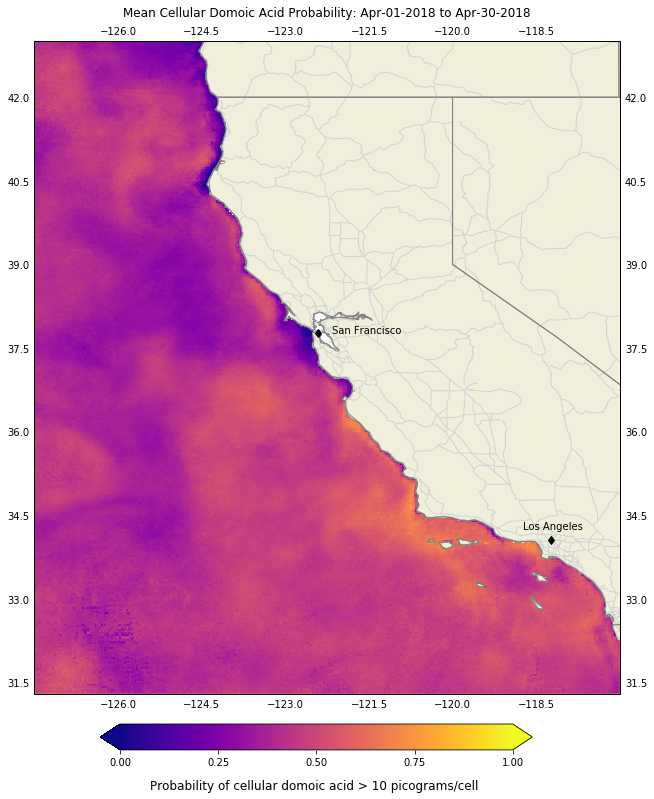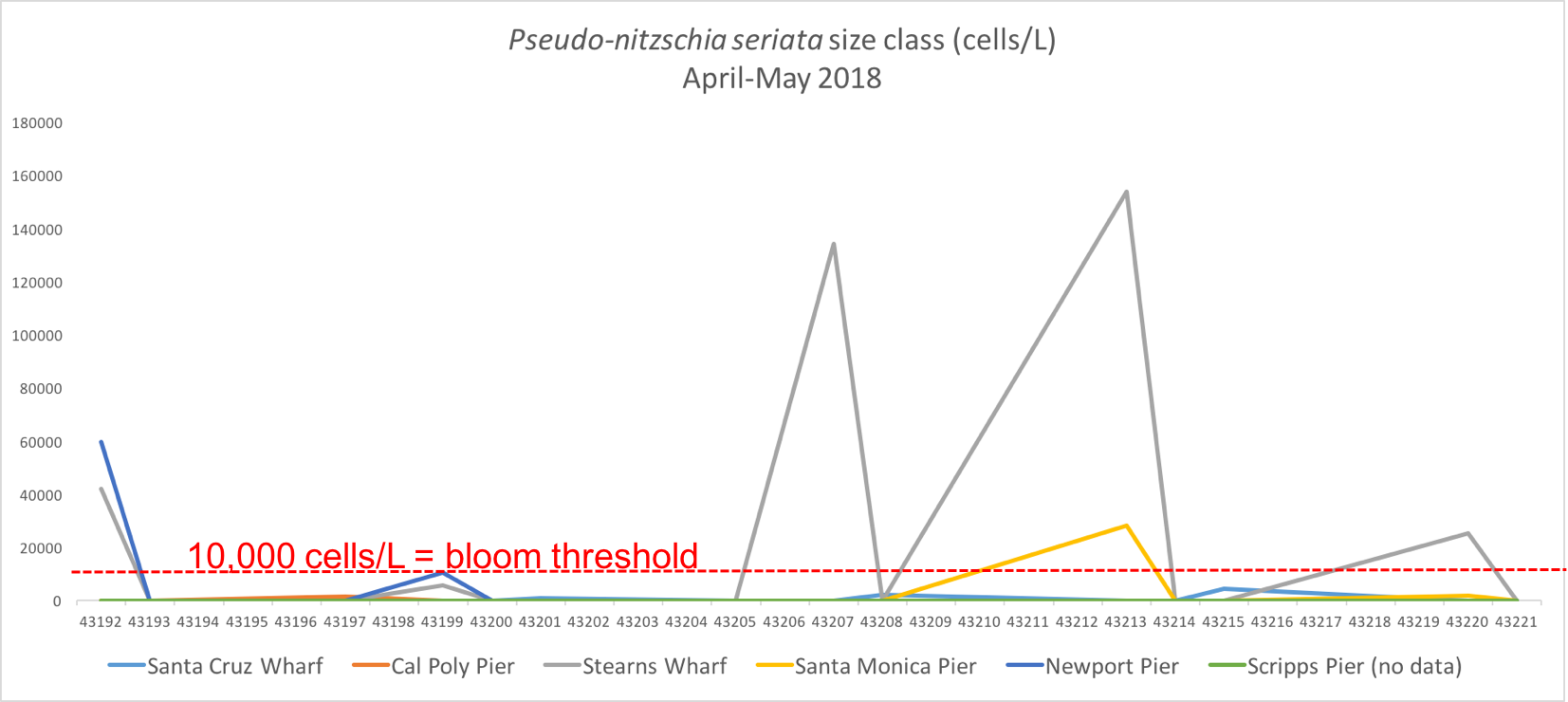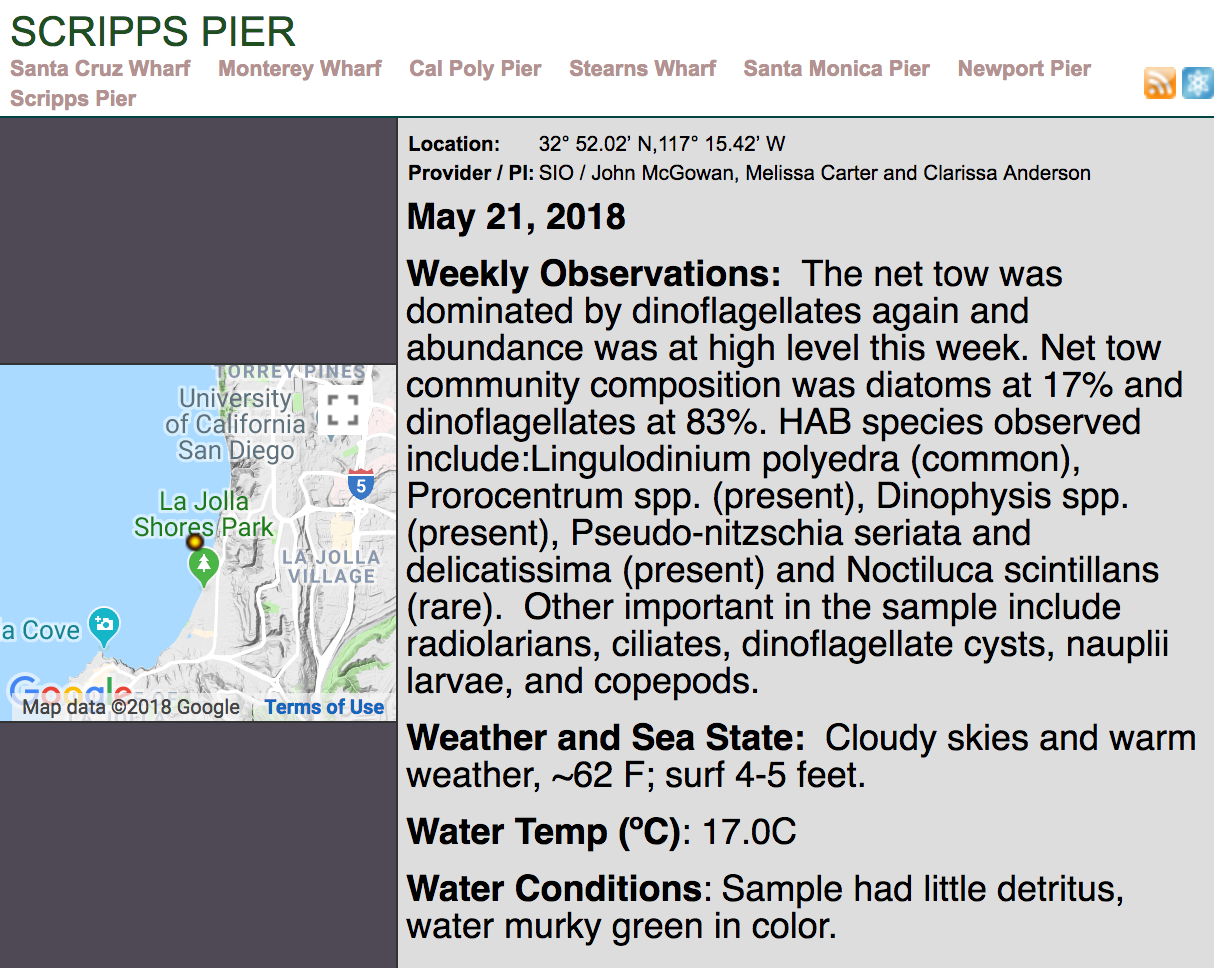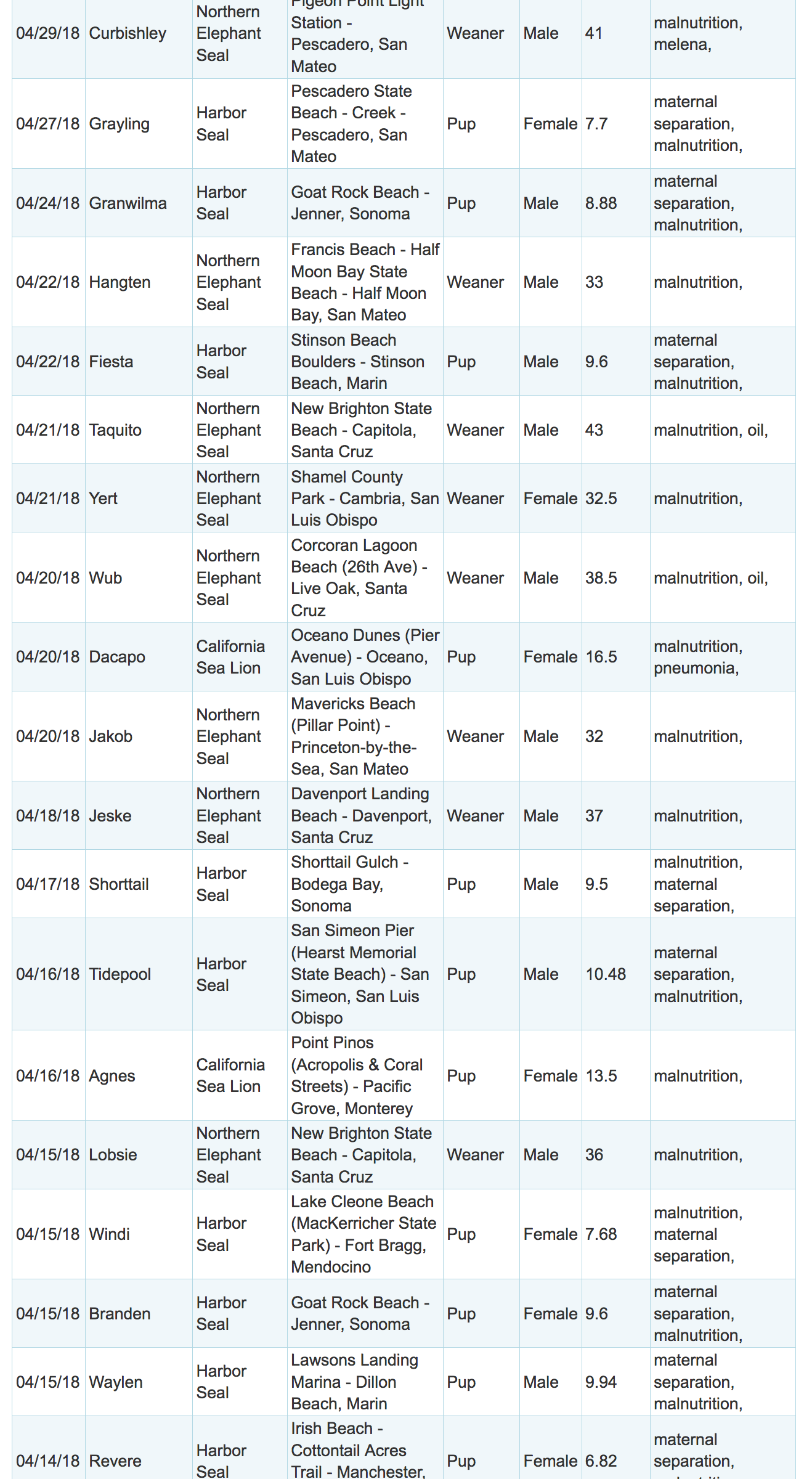The C-HARM mean probability of a Pseudo-nitzschia bloom for the month of April 2018 was high all along the coast. This is consistent with the Harmful Algal Bloom Monitoring and Alert Program (HABMAP) pier sampling at SCCOOS and CeNCOOS which shows that populations of potentially toxigenic Pseudo-nitzschia (the seriata size class) were at or above the bloom threshold at all pier stations where data exist for April to May 2018.
C-HARM predicted high probabilities of domoic acid production in many regions, particularly in the offshore regions of central and southern California and along the Humboldt coastline where very high particulate domoic acid probabilities were predicted. Marine mammal stranding data from central CA for the second half of April 2018 indicate that most strandings were due to malnutrition rather than domoic acid toxicity. This is in contrast to February-March 2018 when four animals were brought to The Marine Mammal Center because of domoic acid toxicity.
Mean Probability of Pseudo-nitzschia Bloom for April 2018
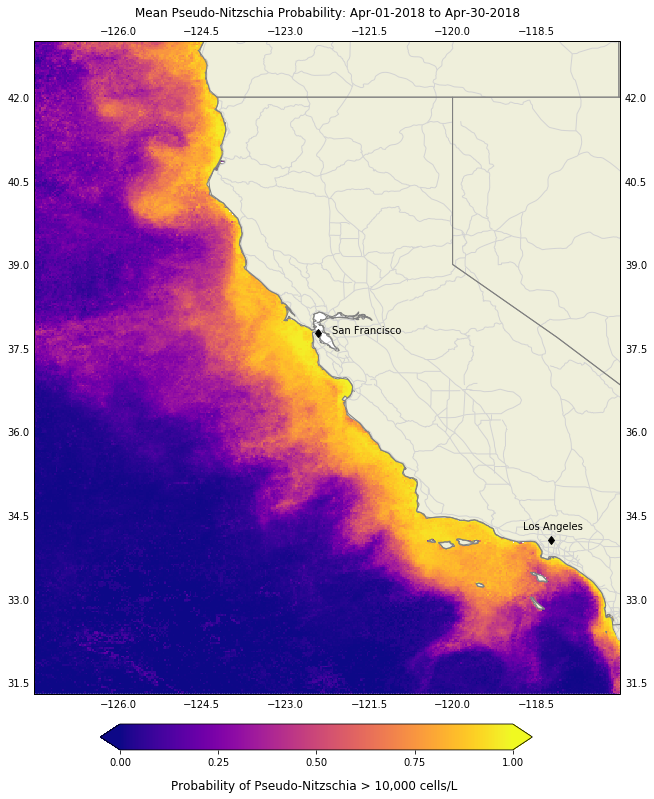
Mean Probability of a Particulate Domoic Acid Event for April 2018
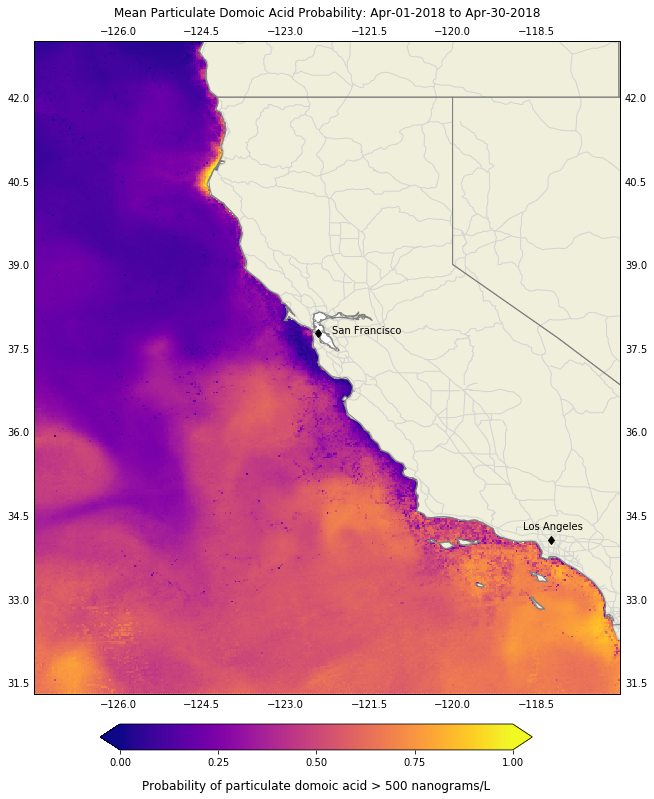
Mean Probability of a Cellular Domoic Acid Event for April 2018
